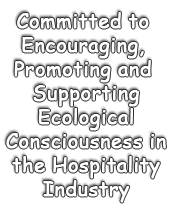 |
CREATING A LIVING SHORELINE!
13-year GHA PARTNER MEMBER Little St. Simons Island is a private barrier island just off the Georgia coast. The natural world presides here across 10,000 intrusion-free acres of maritime forests and marshlands, enjoyed by no more than 32 overnight guests at a time. Seven miles of shell-strewn beaches and energizing outdoor activities beckon guests to explore and discover. Accessible only by boat, this extraordinary natural sanctuary is among the last of its kind anywhere. Vastly different from most other barrier islands along the Atlantic seaboard, Little St. Simons Island remains virtually undeveloped.

Scott Coleman, Ecological Manager, shares information on LSSI's recently completed project to replace an old bulkhead (or seawall) with a more ecologically friendly form of bank stabilization�a living shoreline: The previous 300� bulkhead which was adjacent to our main dock was beginning to fail and in need of replacement. After the wooden bulkhead was removed, the sandy creek bank was angled backward. At low tide, plastic mesh bags holding about 20 pounds of oyster shells each were put in place against the bank. Recycled pieces of concrete were put at the base of the bank to serve as the toe. After the bags of oyster shells were in place, native plantings were added to complete the upland portion of the living shoreline. Planning to completion of the project took more than a year. Our goal was to continue to protect the shoreline from erosion, but to do it with the least impact possible and in a way that benefits the ecosystem there. Cost of the project was significantly less than a traditional bulkhead.
The project is the third in a series of pilot projects in Georgia, installed with the help of several conservation partners including The Nature Conservancy, Sapelo Island National Estuarine Research Reserve, Georgia Department of Natural Resources� Coastal Resources Division and University of Georgia�s Marine Extension. We also received funding from a NOAA (National Oceanic and Atmospheric Administration) grant.

What is a living shoreline? It�s a method used to stabilize banks and prevent erosion from tides and surface water runoff using oysters and native plants. In Georgia, we have lost 90% of our historic oyster reefs. Our oysters were overharvested in the early 1900s for the cannery industry and the shells were not returned to the marshes. Oyster larvae (called spat) require a substrate to settle on, often other oyster shells. Our waters have been tested and are rich in spat, so they should settle on the newly-installed shell and begin growing within the next year, creating a living reef. Oysters are considered a keystone species in our saltmarshes and play important roles in water filtration and in enhancing fish habitat. With the creation of the oyster reef and by planting native vegetation, we are beginning to reconnect the upland, marsh and creek ecosystems at this site.

In addition to our conservation partners, volunteers from Coastal WildScapes and AmeriCorps have put in nearly 1,000 volunteer hours bagging oyster shells and replanting native vegetation along the shoreline. Although we had to purchase quite a bit, we have also been able to take advantage of the restaurant oyster shells that we had stored on site. Our guests have also unknowingly played a role with this project. Of the 10,000 bags used in the project, about 2,000 of those came from our Friday evening oyster roasts.
In the future as we are better able to document the success of this new technique, we hope to continue working with our partners as they develop living shoreline guidelines to share with private landowners and others encouraging the use of this type of stabilization as an alternative to traditional types of hardened shorelines.
For further information, contact Scott at scottc@littlessi.com.
To learn more about GHA
and how your property can PROFIT from being GREENER,
jump to "Green" Hotels Association® !
|

"GREEN" IDEA!
 Don�t throw anything out of your car windows, and don�t let any of your passengers throw anything our either. Keep our countryside and waterfronts clean and beautiful.
Don�t throw anything out of your car windows, and don�t let any of your passengers throw anything our either. Keep our countryside and waterfronts clean and beautiful.







greenhotels.com
|
|
Unique Visitors |
Hits |
| Jan |
10,947 |
536,184 |
| Feb |
10,849 |
555,803 |
| Mar |
11,734 |
627,694 |
| Apr |
11,937 |
633,702 |
| May |
11,216 |
596,558 |
| Jun |
9,750 |
547,316 |
| Jul |
8,750 |
448,527 |
| Aug |
8,776 |
449,085 |
| TOTAL 2013 |
83,959 |
4,394,869 |

|
 |



